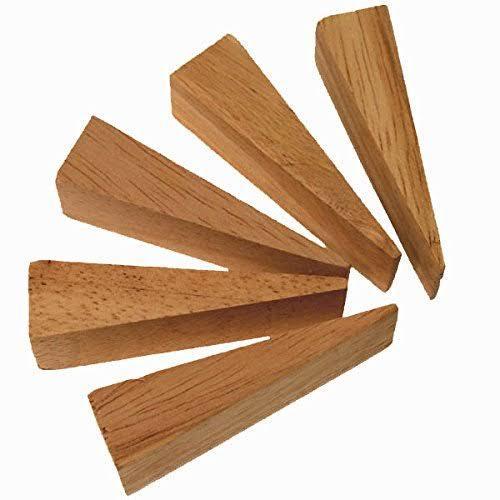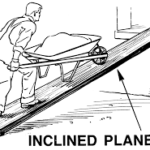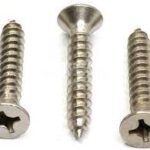A wedge is formed by two inclined planes that are placed back to back. This forms a Vshaped object – typically a piece of wood or metal – that is thick at one end and slopes to a thin edge at the other. Wedges are used for purposes such as holding things together, cutting or prying things apart, or stopping an object from moving. Examples of wedges include:
· the blade of a knife
· the edge of the shovel
· each blade on a pair of scissors
· the edge of a door stop
· the sharp edge of an ax
· the end of a nail
Questions about wedges assess your knowledge of how the direction and angle of force is used to perform work on other objects, such as splitting wood or opening a jammed door. Below are some key facts that may be useful for answering questions about inclined planes.
Key Facts
· The force and the load move in different directions. Consider that as you use force to swing an ax downward, the load (wood) breaks apart and falls to the sides.
· The more resistance that a wedge meets, the greater the force that will be needed to accomplish the work.

Solution Pointers for Wedge questions:
· Evaluate the angle of the wedge to determine the relative force or effort needed to accomplish the work.
· Remember to consider the effect of gravity and resistance.


